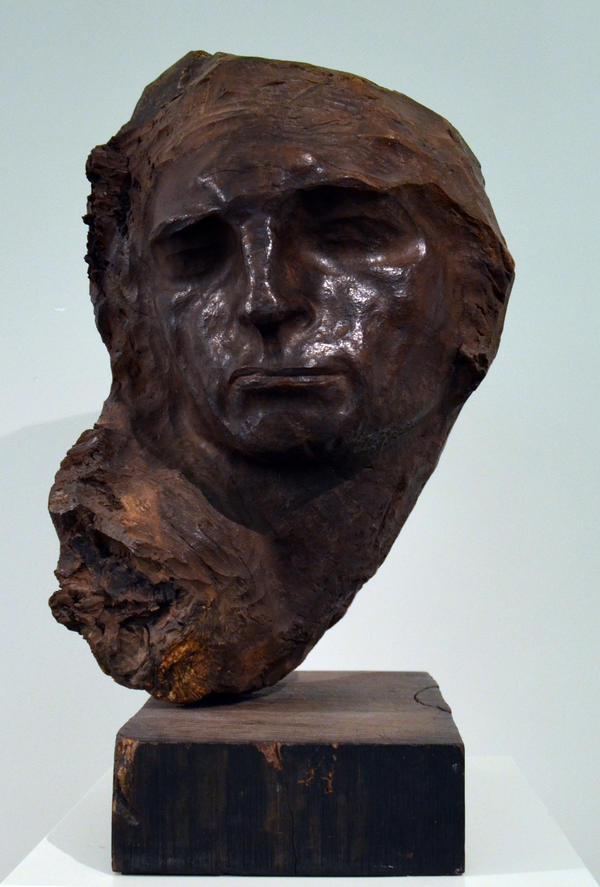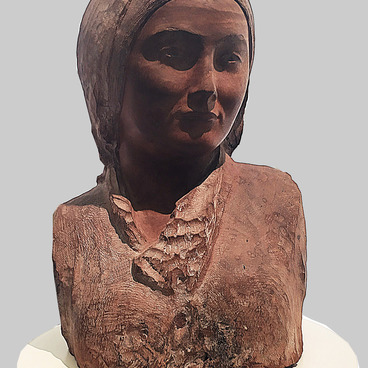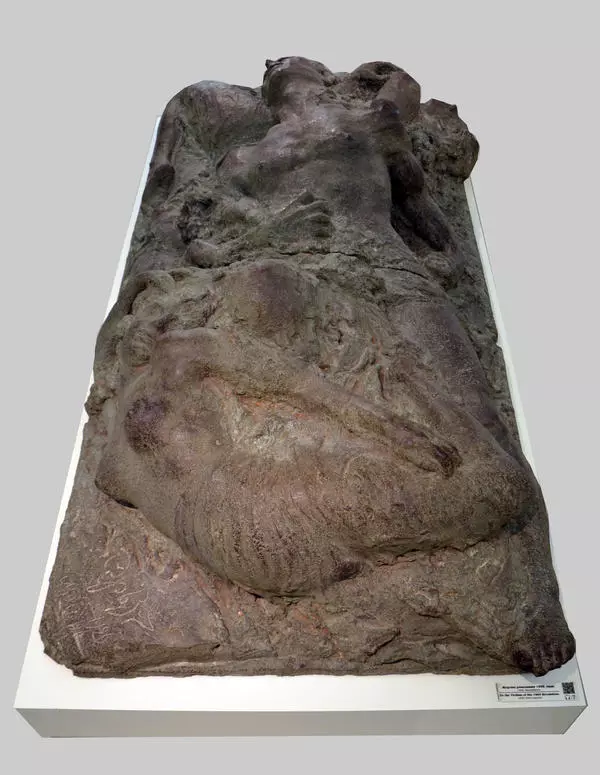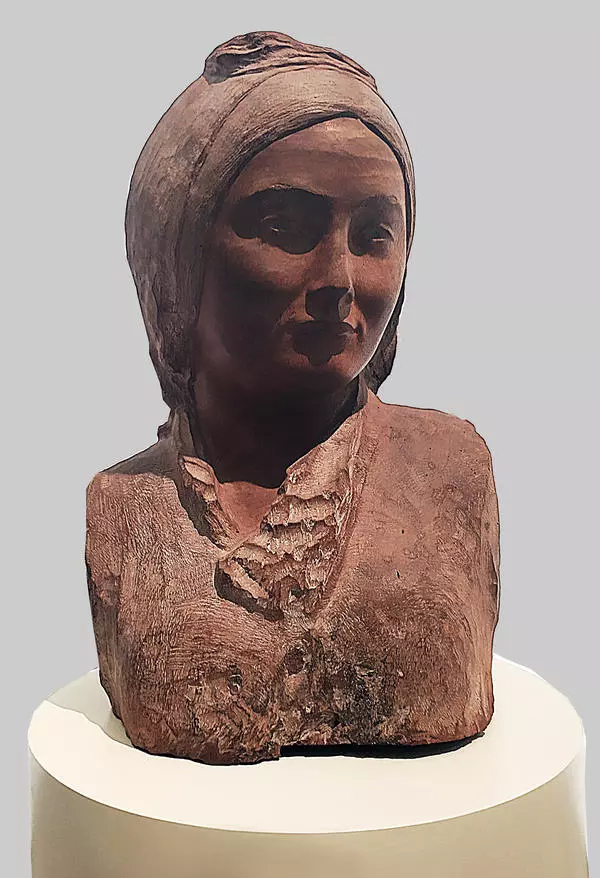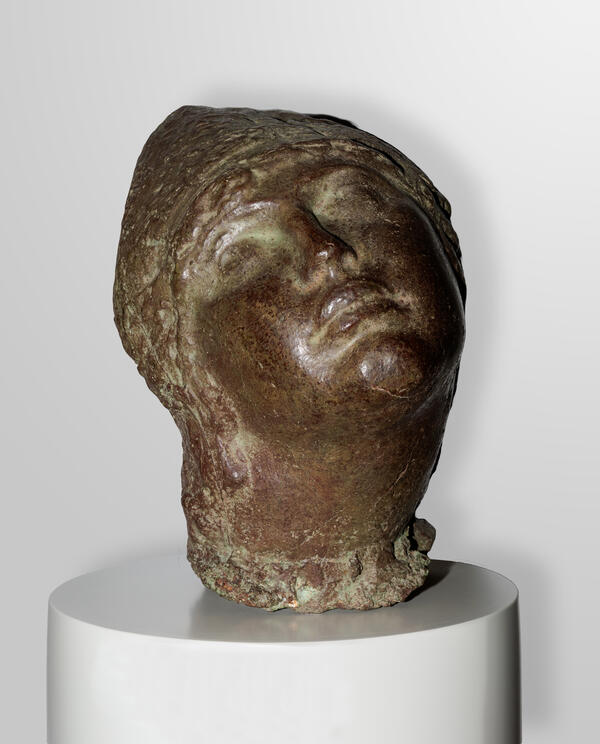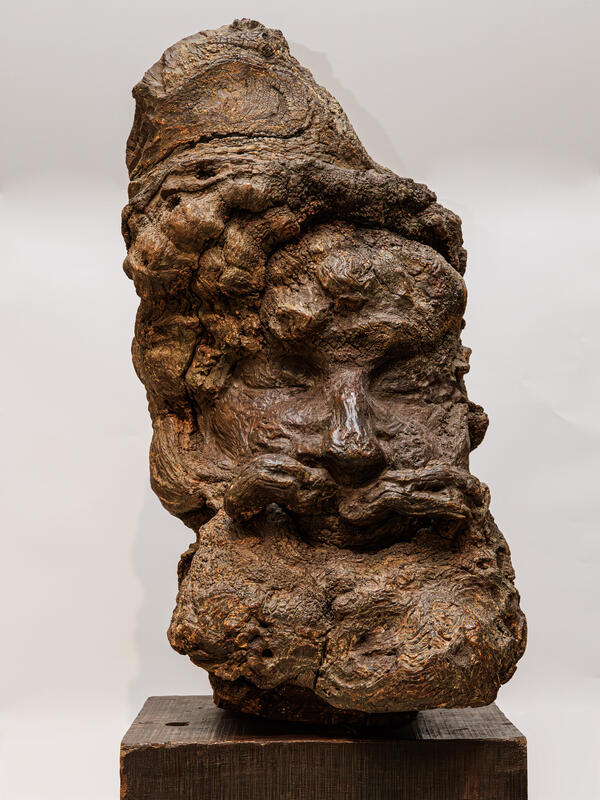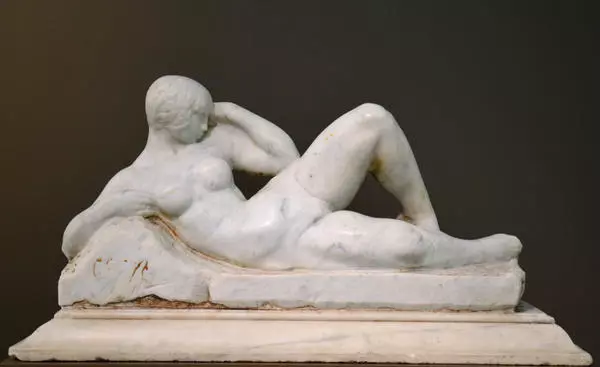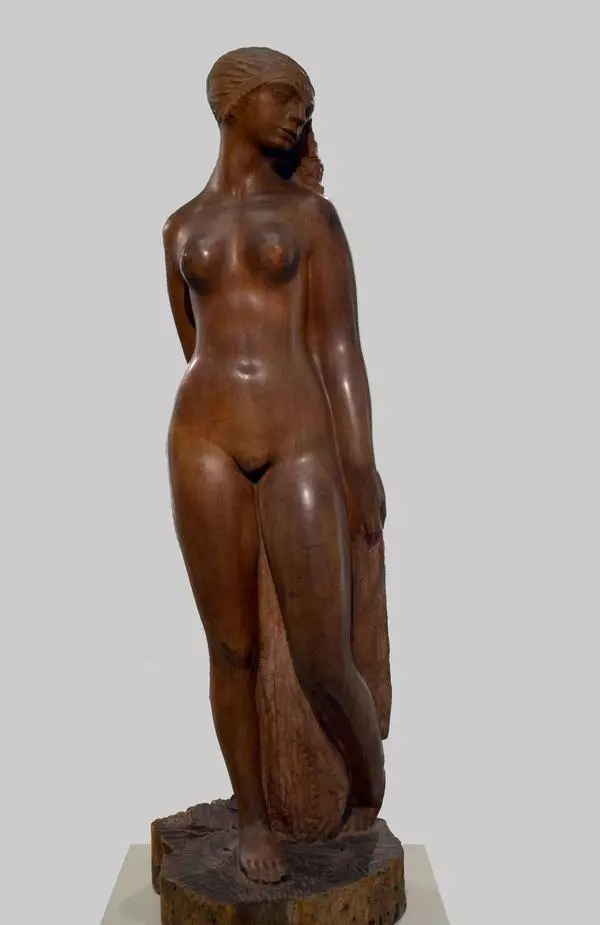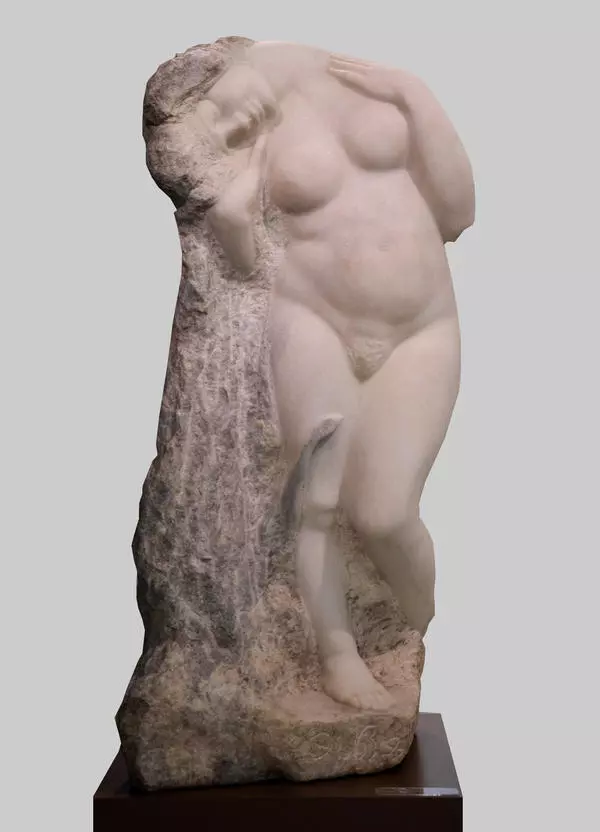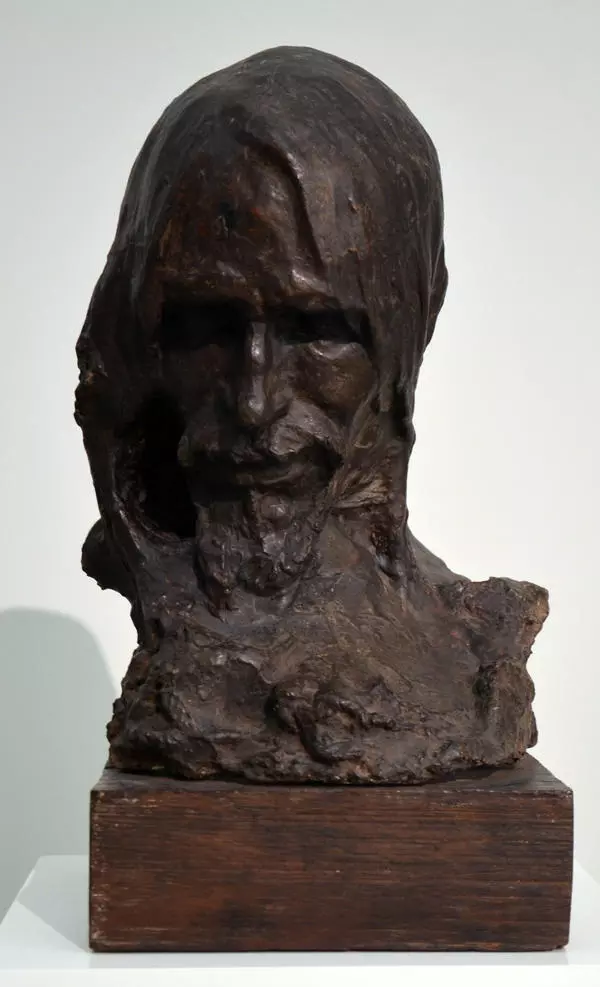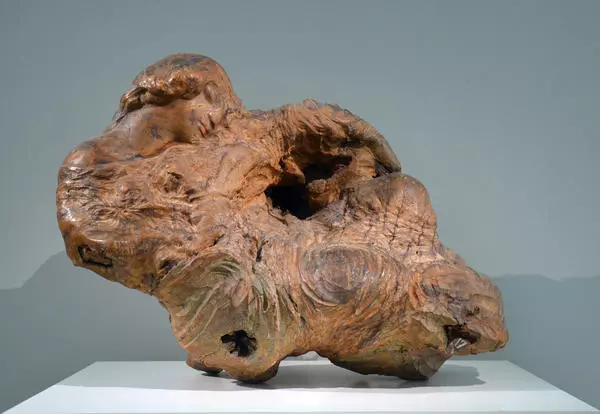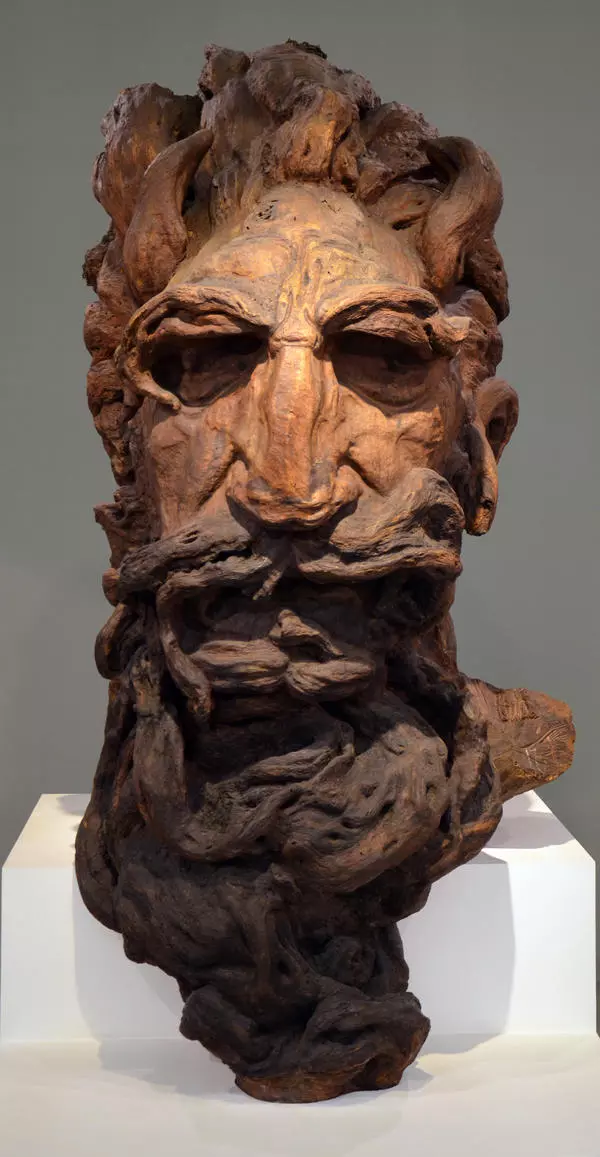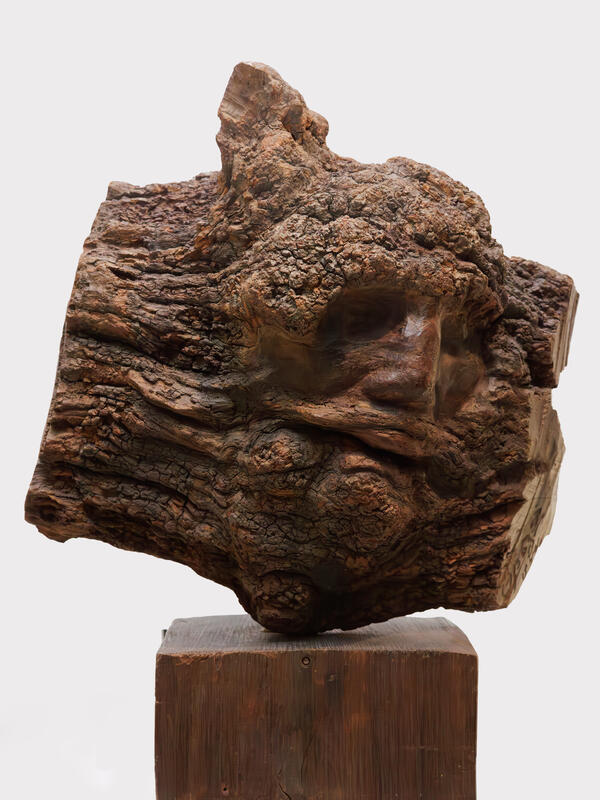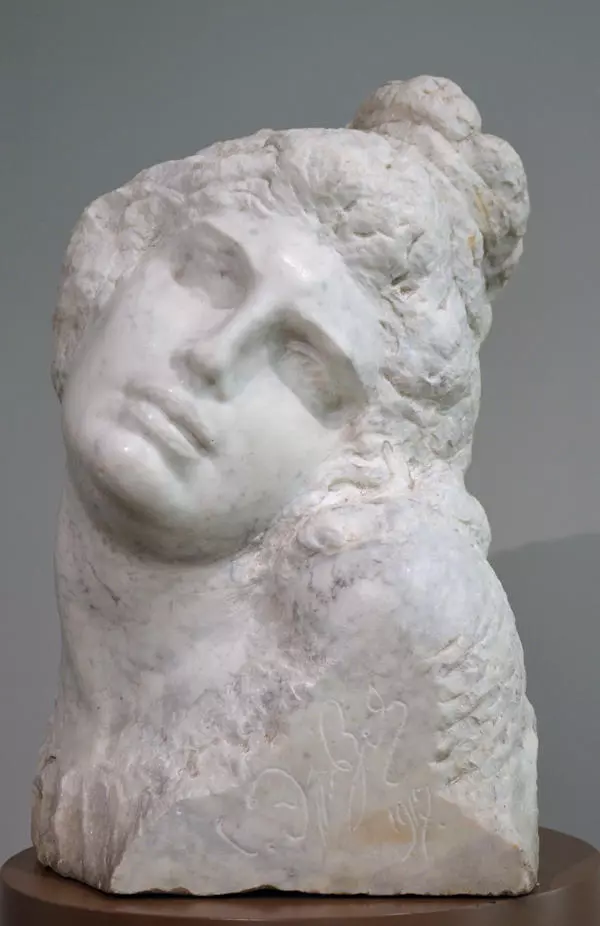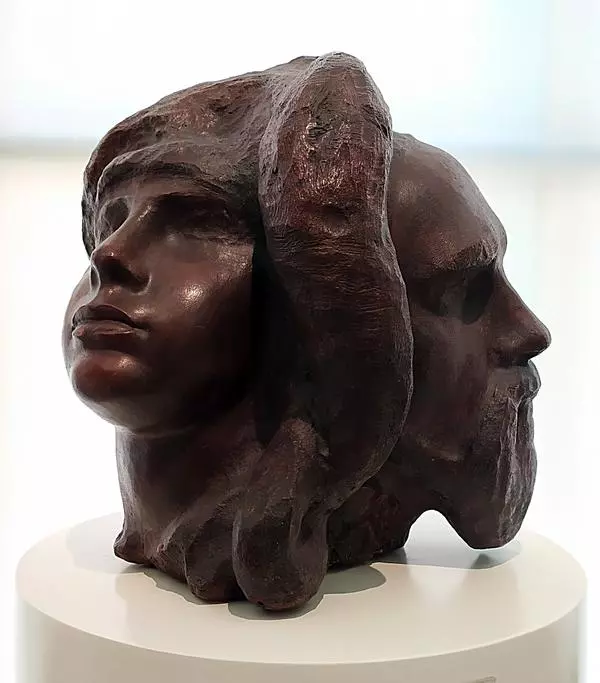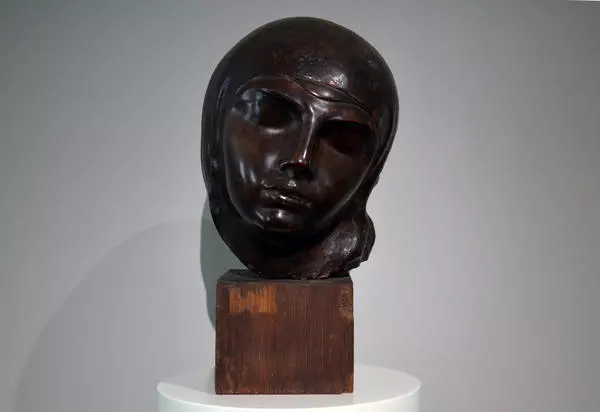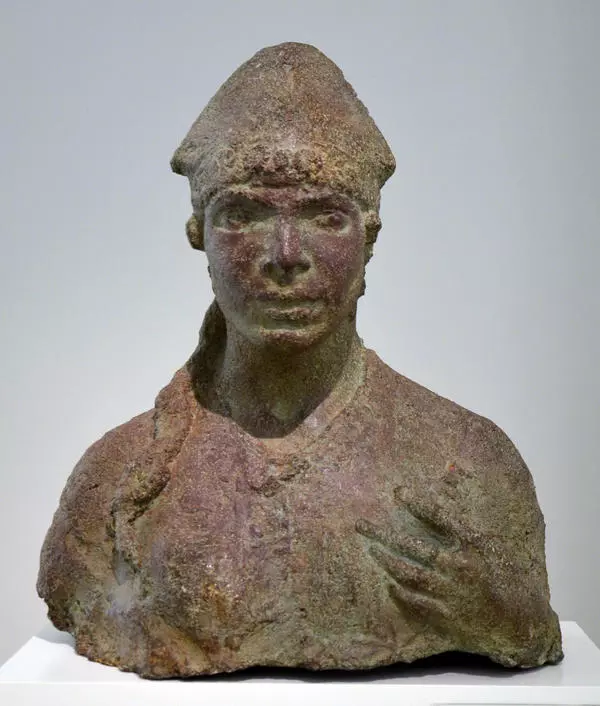Courage is the most powerful sculpture from the series of allegorical works of Stepan Erzia, focusing on the inner turmoil of a human being. Art criticists refer it to the so-called psychological series, which include such works as Terror, Despair and Anguish. The sculpture was created in Argentina, during the period of the artist’s emigration in 1932, from his favored quebracho.
The new material induced the sculptor to apply a new technique of creation, though the theme of his works generally remained unchanged: the artist was preoccupied with revealing the essence of people’s emotions, displaying a person at the time of the climax of the intensity of spiritual experiences. Yet, while the female images obviously imparted a positive mood – they were young, candid and beautiful; - the male characters are marked with a tragic note. They are a striking evidence of the increasing expression in Stepan Erzia’s creative work.
Like other Argentinian period quebracho works of the artist, the Courage sculpture seems to have been created by nature itself, with only a slight touch-up of the wood by the artist’s cutter. The sculpture presents a male face with strong features, lips tightly pressed, and a concentrated, intent look from beneath the frowned eyebrows. The surface of the face is not grounded; it is deliberately left rugged, with rough cuts adding monumentality to the creation.
The inner willpower of the hero is emphasized by the dynamic posture: moving forward, the man turned around for a second, as if in a last –minute wish to cast a farewell look on the people left behind. The artist succeeded in depicting that moment and bringing an instant to a halt. Time stops its flight, while the viewer is contemplating the sculpture; but one look away, and the hero seems to be about to pursue his determination to move forward.
Stepan Erzia created male images reflecting about his own destiny on the Earth. The forced emigration of millions of his compatriots, the fear of loneliness, the feeling of a person being abandoned and doomed in the vast and hostile world, that had witnessed and lived through the atrocities of the World War I, were bound to be expressed in the figurative images created by the artist.
Courage is amazingly in sync with the twentieth century, - the era of violent social upheavals and world wars. The turbulent and disconcerting environment mightily imposed its characters on the artist. Thus, he subconsciously transferred the responsibility for all that was happening on the man, a hero, a soldier, a victim.
The new material induced the sculptor to apply a new technique of creation, though the theme of his works generally remained unchanged: the artist was preoccupied with revealing the essence of people’s emotions, displaying a person at the time of the climax of the intensity of spiritual experiences. Yet, while the female images obviously imparted a positive mood – they were young, candid and beautiful; - the male characters are marked with a tragic note. They are a striking evidence of the increasing expression in Stepan Erzia’s creative work.
Like other Argentinian period quebracho works of the artist, the Courage sculpture seems to have been created by nature itself, with only a slight touch-up of the wood by the artist’s cutter. The sculpture presents a male face with strong features, lips tightly pressed, and a concentrated, intent look from beneath the frowned eyebrows. The surface of the face is not grounded; it is deliberately left rugged, with rough cuts adding monumentality to the creation.
The inner willpower of the hero is emphasized by the dynamic posture: moving forward, the man turned around for a second, as if in a last –minute wish to cast a farewell look on the people left behind. The artist succeeded in depicting that moment and bringing an instant to a halt. Time stops its flight, while the viewer is contemplating the sculpture; but one look away, and the hero seems to be about to pursue his determination to move forward.
Stepan Erzia created male images reflecting about his own destiny on the Earth. The forced emigration of millions of his compatriots, the fear of loneliness, the feeling of a person being abandoned and doomed in the vast and hostile world, that had witnessed and lived through the atrocities of the World War I, were bound to be expressed in the figurative images created by the artist.
Courage is amazingly in sync with the twentieth century, - the era of violent social upheavals and world wars. The turbulent and disconcerting environment mightily imposed its characters on the artist. Thus, he subconsciously transferred the responsibility for all that was happening on the man, a hero, a soldier, a victim.

